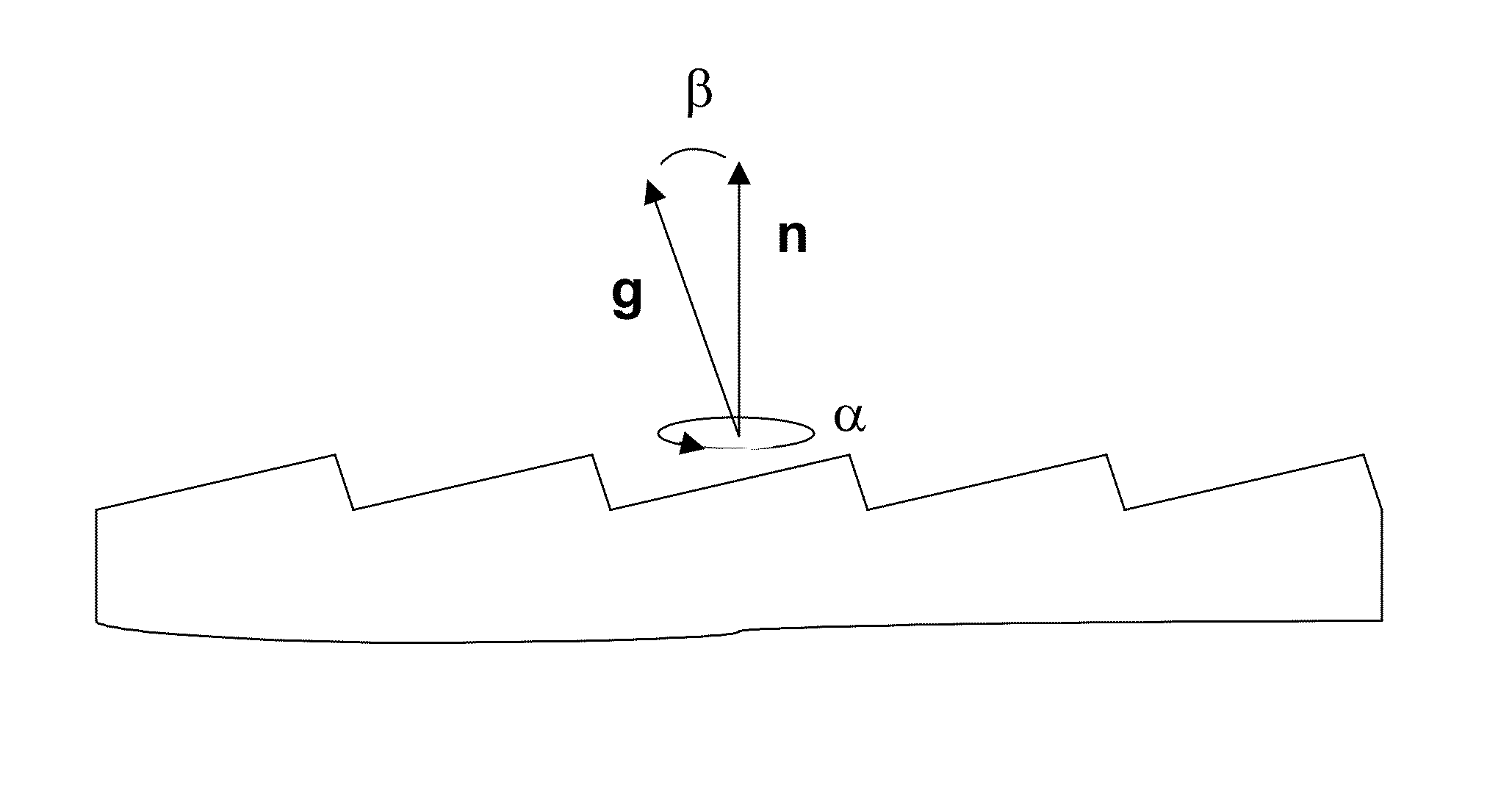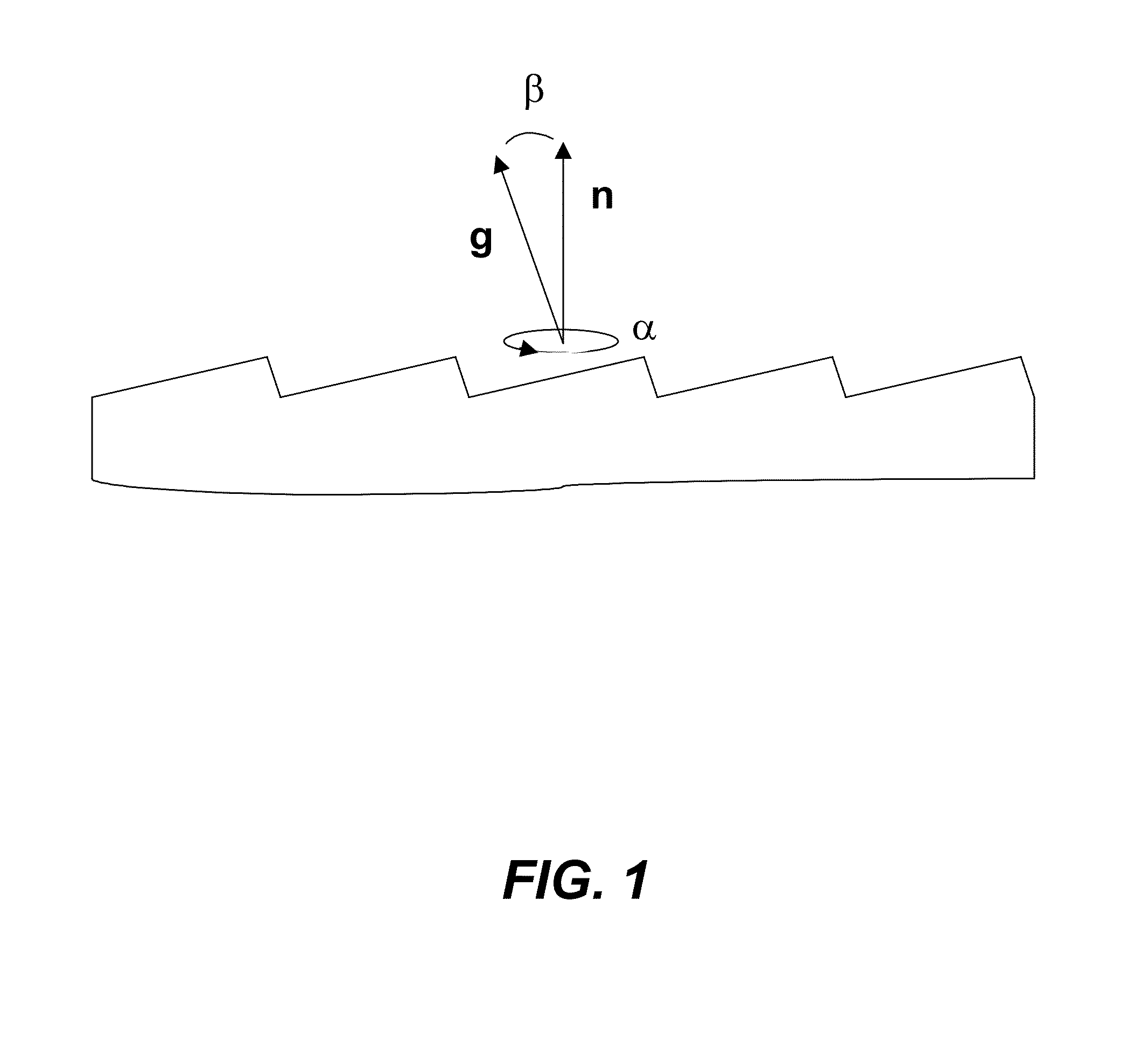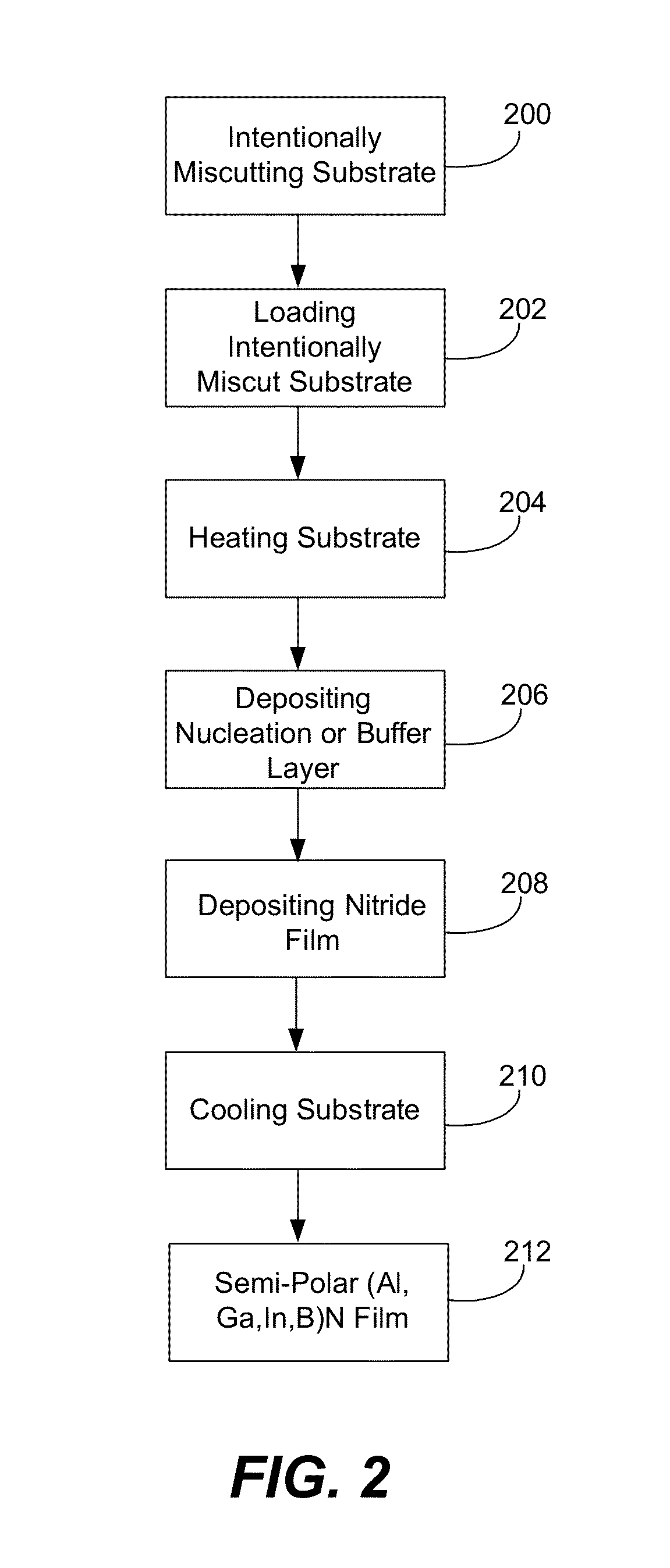Miscut semipolar optoelectronic device
- Summary
- Abstract
- Description
- Claims
- Application Information
AI Technical Summary
Benefits of technology
Problems solved by technology
Method used
Image
Examples
Embodiment Construction
[0051]In the following description of the preferred embodiment, reference is made to the accompanying drawings which form a part hereof, and in which is shown by way of illustration a specific embodiment in which the invention may be practiced. It is to be understood that other embodiments may be utilized and structural changes may be made without departing from the scope of the present invention.
[0052]Overview
[0053]The present invention describes a method for growing semipolar nitride semiconductor films via techniques comprising, but not limited to, MOCVD, HVPE or MBE, on {100} MgAl2O4 (spinel) substrates miscut in the direction and on {1-100} (m-plane) Al2O3 (sapphire) substrates miscut in the direction. The use of an intentionally miscut substrate provides step edges and / or kinks, as shown in FIG. 1, that serve as preferential nucleation sites for the growth of semipolar nitride layers. This, in turn, leads to improved layer properties, comprising, but not limited to, coalesce...
PUM
 Login to View More
Login to View More Abstract
Description
Claims
Application Information
 Login to View More
Login to View More - R&D
- Intellectual Property
- Life Sciences
- Materials
- Tech Scout
- Unparalleled Data Quality
- Higher Quality Content
- 60% Fewer Hallucinations
Browse by: Latest US Patents, China's latest patents, Technical Efficacy Thesaurus, Application Domain, Technology Topic, Popular Technical Reports.
© 2025 PatSnap. All rights reserved.Legal|Privacy policy|Modern Slavery Act Transparency Statement|Sitemap|About US| Contact US: help@patsnap.com



